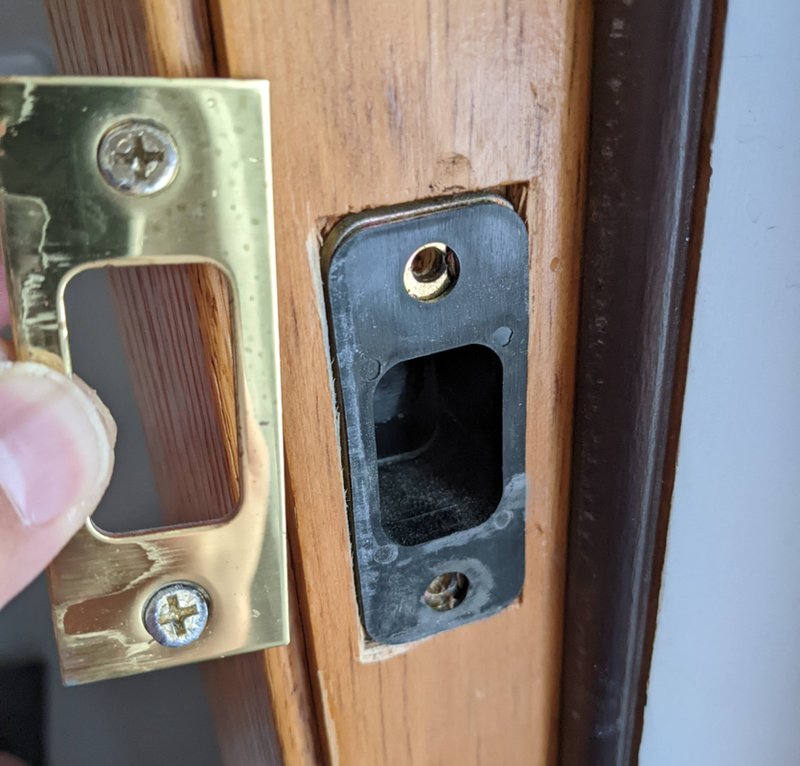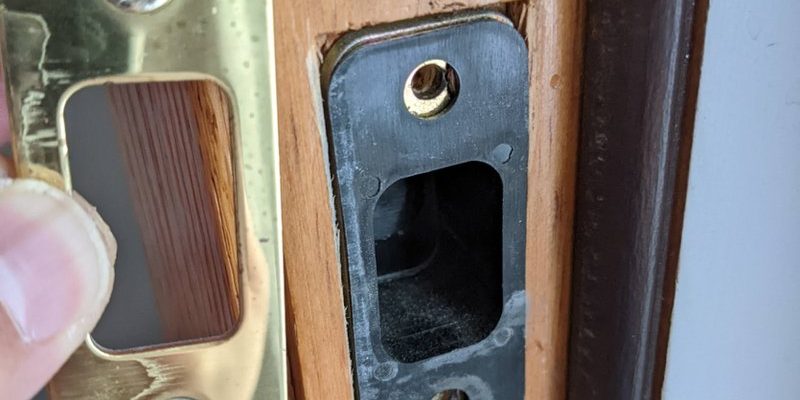
You might be wondering why screws matter so much in this scenario. Well, just like the right ingredients in a recipe, the right screws can transform your project from shaky to sturdy. Whether you’re a DIY enthusiast or a homeowner looking to improve security, knowing about the best screws will help you get the job done right the first time.
The Importance of Using the Right Screws
When it comes to installing door strike plates, the screws you use are critical. They’re not just there to hold the plate in place; they play a key role in the overall security of your door. If you use screws that are too short or weak, the strike plate can pull away from the door frame, leaving it vulnerable.
Think of it like building a house. If you use crummy materials, the house will eventually crumble. The same goes for your door. Secure screws create a solid connection between the strike plate and the door frame, providing reliable protection against forced entry. It’s all about those little details that keep your home safe.
Types of Screws for Door Strike Plates
Not all screws are created equal, especially when it comes to door strike plates. Here’s a quick overview of the different types of screws you might consider:
- Wood Screws: These are ideal for softer materials like wood. They provide a good grip, but don’t always hold up against heavy-duty use.
- Machine Screws: These are used with nuts and can be a more secure option, especially for metal frames.
- Self-tapping Screws: These are fantastic for quick installations. They create their own hole, which saves time during installation.
- Sheet Metal Screws: If you’re dealing with metal doors or frames, these screws are specifically designed to grip onto metal surfaces.
- Longer Screws: These are essential when anchoring into studs for added security and stability.
Choosing the right type of screw depends on the material of your door frame and the door itself. If you want to ensure your strike plate stays put, it’s worth your time to pick the right screw for the job.
Why Longer Screws Matter
You might be wondering, “Do I really need longer screws?” The short answer is yes! Longer screws provide better anchorage to the studs in your wall. These screws reach deeper, ensuring that your door strike plate is firmly attached, even if someone tries to force the door open.
Imagine trying to hold a heavy box with just your fingertips. It’s not going to work well, right? That’s exactly what happens when you use short screws to install a strike plate. Without that extra grip, the plate can easily pull loose. Longer screws distribute the force more evenly, making your door more resistant to break-ins.
Installation Tips for Door Strike Plates
Now that you know what screws to use, let’s talk about installation. Here are some tips to get the best results:
1. Measure Twice, Drill Once: Make sure you position the strike plate correctly. Use a level to ensure it’s straight and mark where you’ll drill.
2. Pilot Holes are Your Friend: If you’re using longer screws, it’s a good idea to drill pilot holes first. This prevents the wood from splitting and ensures a smoother installation.
3. Use a Power Drill: A power drill will make the process much quicker. Plus, it helps ensure that the screws are driven in straight, creating a snug fit.
4. Don’t Over-tighten: While you want the screws to be secure, over-tightening can strip the screws or damage the door frame. Tighten until snug, but don’t force it.
By following these tips, you’ll set yourself up for success in installing your door strike plates.
Recommended Brands for Screws
When it comes to purchasing screws for your door strike plates, here are some brands that consistently deliver quality:
- Hillman: They offer a variety of screws that are reliable and come in decent lengths for your needs.
- GRK Fasteners: Known for their durable design, GRK screws are a favorite among home improvement enthusiasts.
- DeWalt: A trusted name in tools, their screws are designed to withstand heavy-duty use.
- FastenMaster: If you’re looking for extra length, FastenMaster provides long screws perfect for securing strike plates.
These brands ensure that you’re using quality materials that won’t let you down when it matters most.
Common Problems and Troubleshooting
Even with the right screws, issues can arise. Here are some common problems you might encounter and how to troubleshoot them:
– Loose Strike Plate: If your strike plate becomes loose over time, check to ensure you used the appropriate screw length. If the screws are too short, consider replacing them with longer ones to reach the studs.
– Fractured Wood: Over-tightening can lead to fractures in the wood surrounding the strike plate. If this happens, you might need to replace the strike plate and use pilot holes next time.
– Misalignment: If your door doesn’t latch properly, the strike plate might be misaligned. Double-check the positioning of both the plate and the screws to ensure everything lines up correctly.
By addressing these issues promptly, you can maintain the effectiveness of your door strike plates for years to come.
Final Thoughts on Choosing and Installing Screws
In the grand scheme of home security, choosing the best screws for installing door strike plates might feel small, but it’s a crucial step that shouldn’t be overlooked. Long screws provide the stability and support needed to keep your door secure, and selecting the right type can make your installation go smoothly.
Remember, it’s all about the details. Whether you’re a seasoned DIYer or a first-timer, taking the time to choose quality screws and install them properly will pay off in the long run. Your home deserves the best protection, and this is a solid step in making sure it’s safe and sound. So go ahead, grab those longer screws, and get to work on fortifying your doors!
